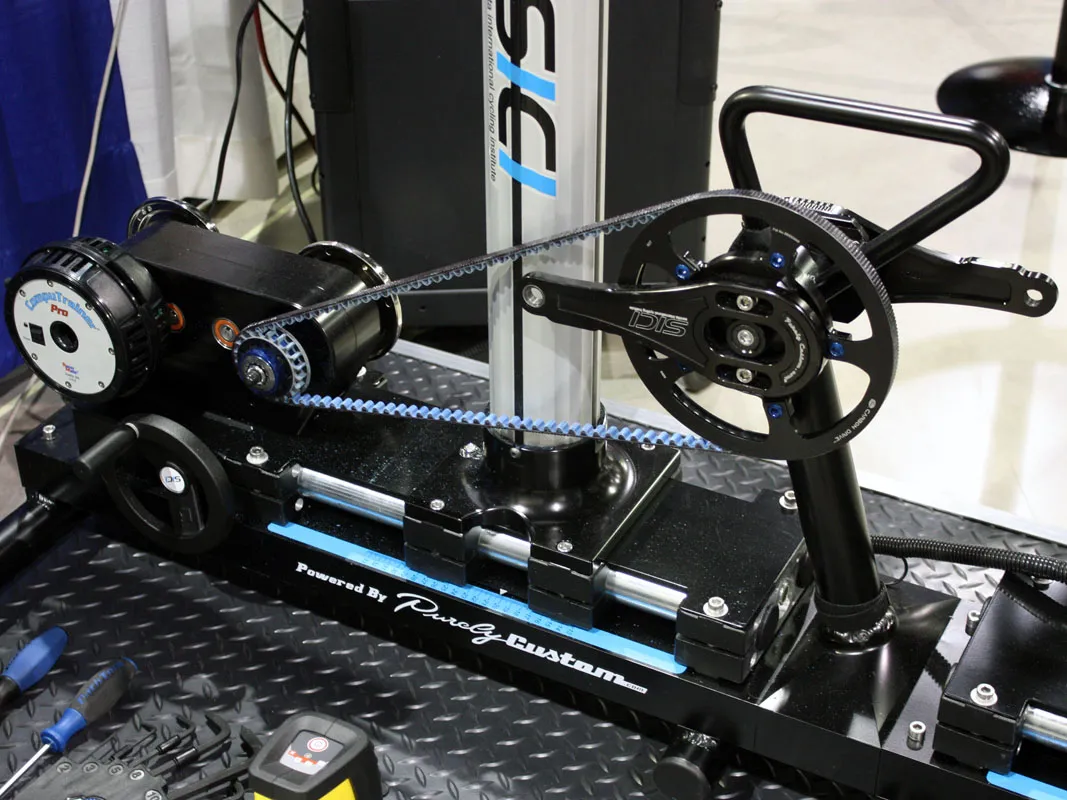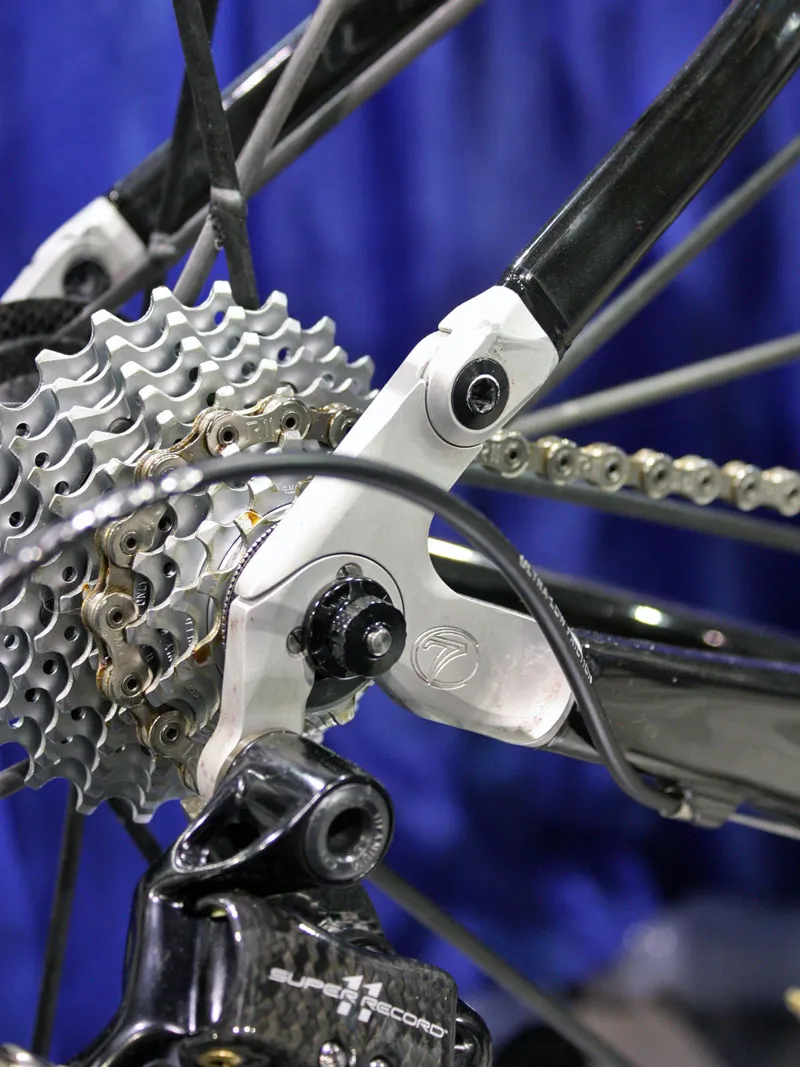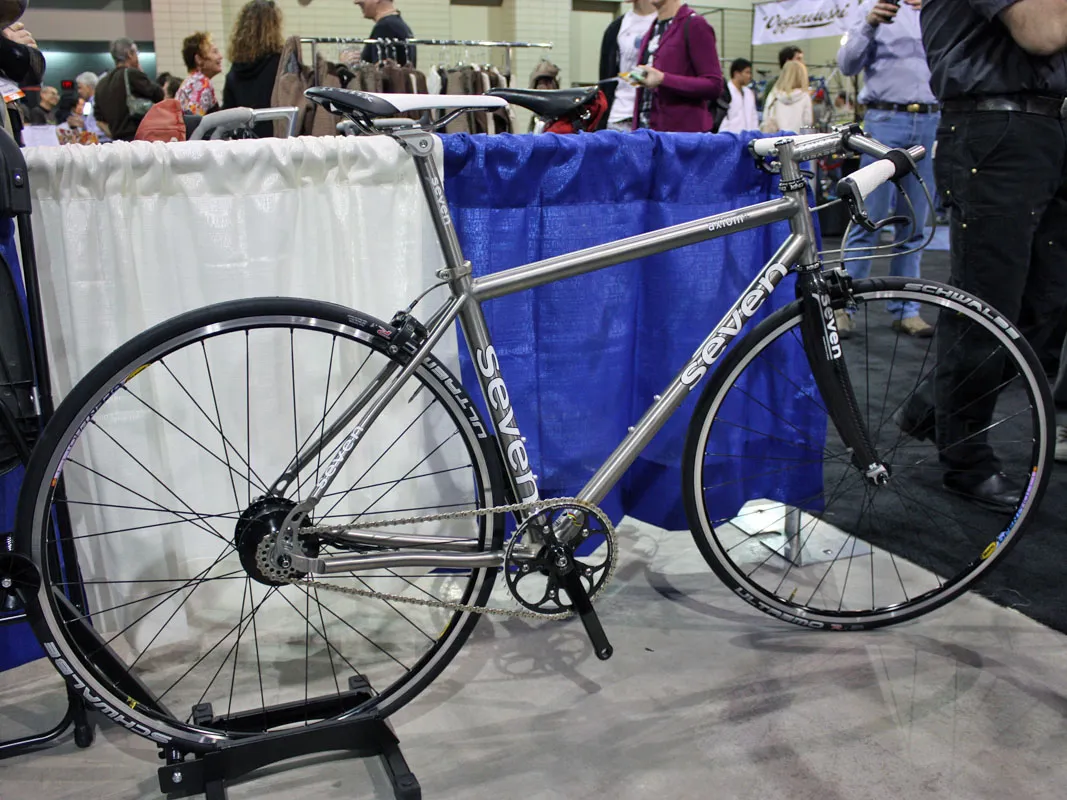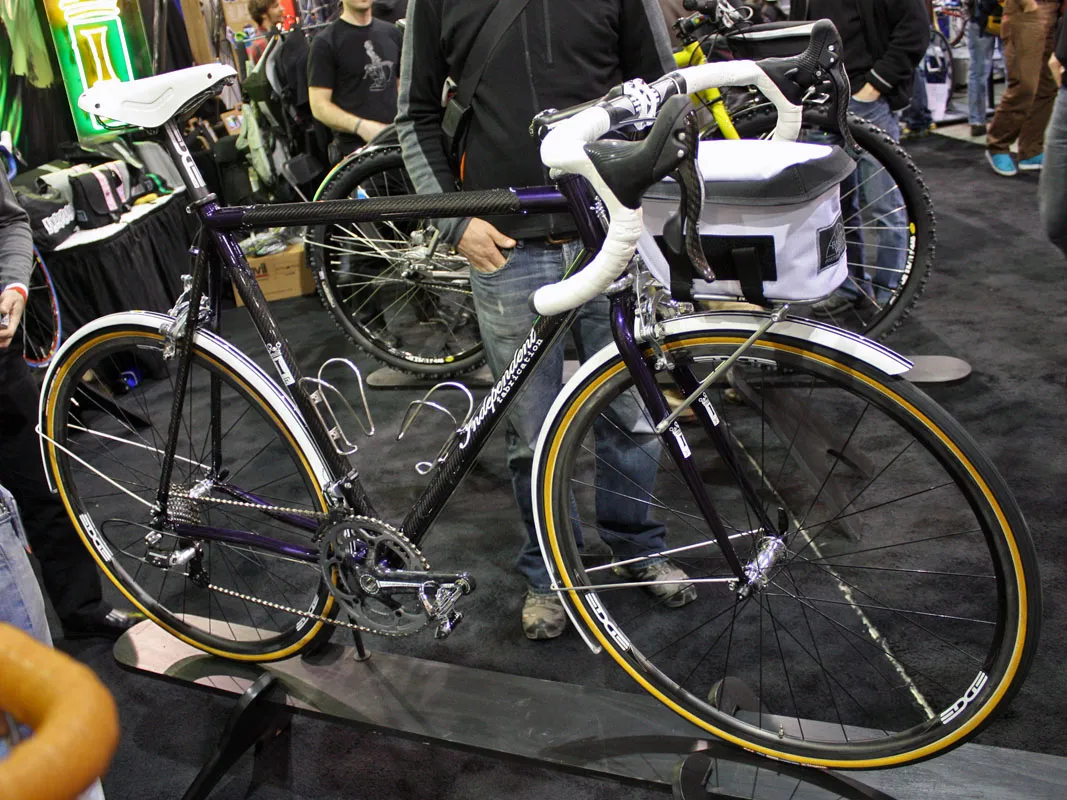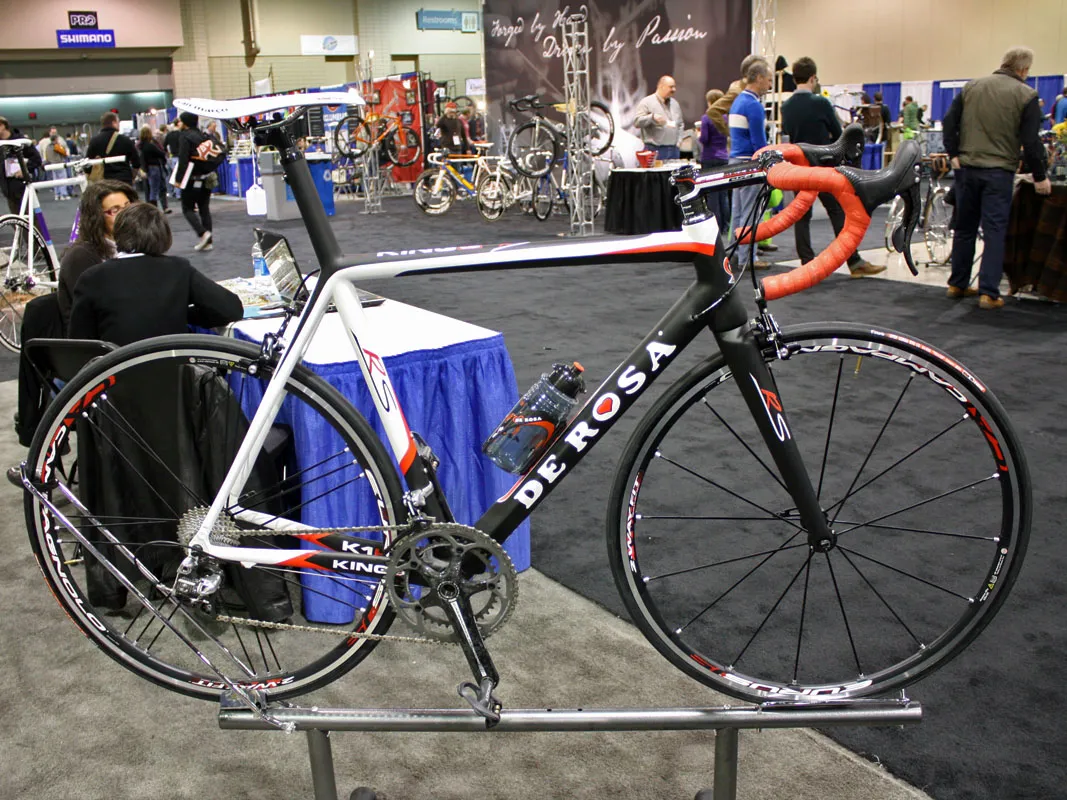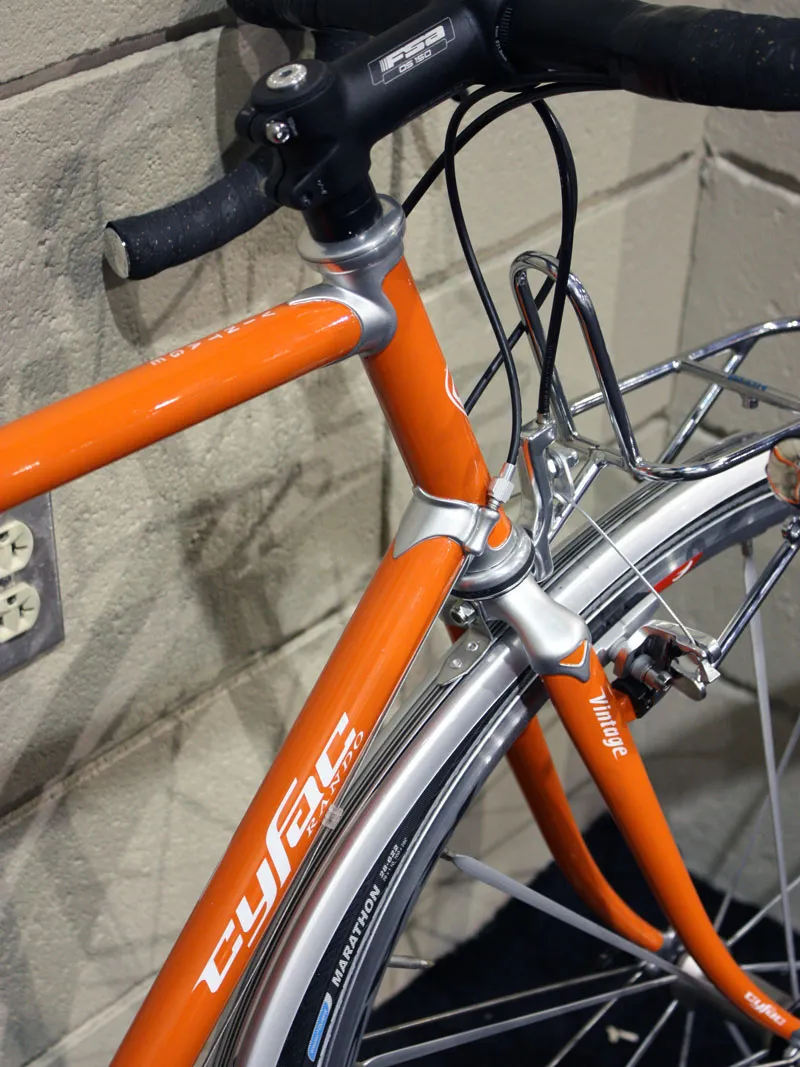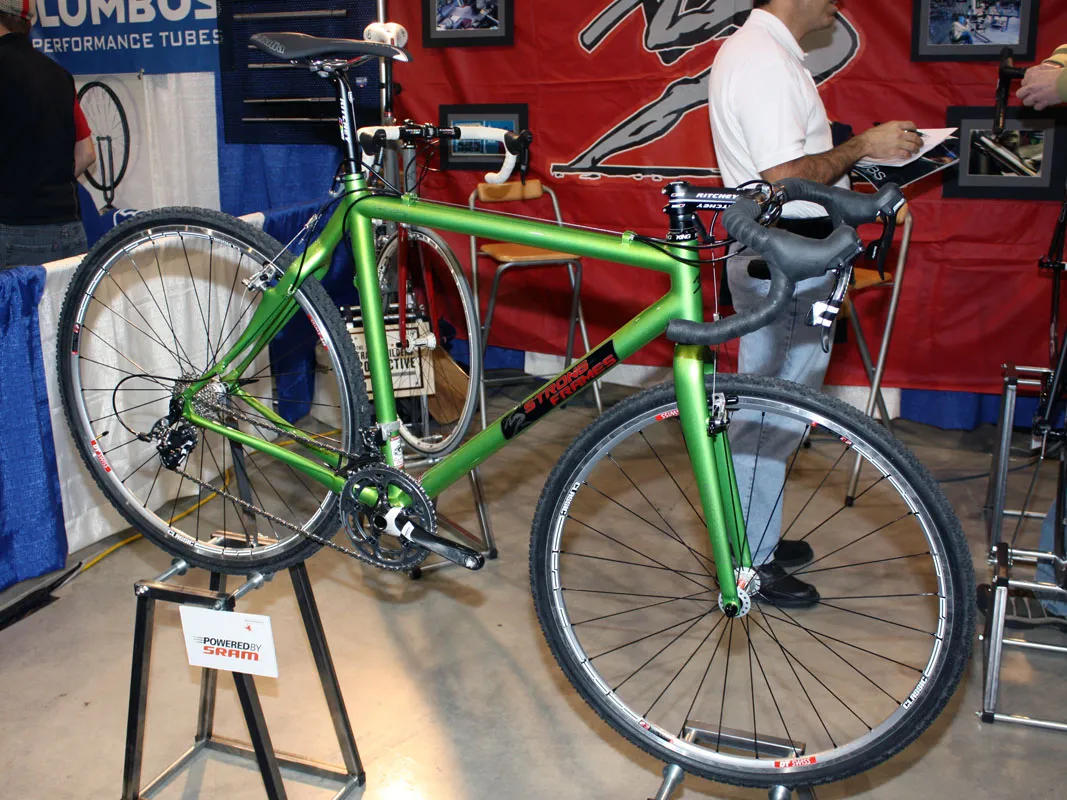Non-metallic materials continued to make a strong showing at this year's North American Handmade Bicycle Show with over a dozen builders showing bikes made either entirely or at least mostly of one type of fibre composite – and not just the usual synthetic types, either.
Serotta
Serotta's stunning Meivici AE caught a lot of onlookers off-guard – though it sported a thoroughly convincing skin, it was definitely made of carbon fibre and not wood. Serotta developed the finish in co-operation with PPG and only the closest inspection would betray the natural-looking wood grain.

One of the biggest stars of the Serotta booth wasn't even a bike, and neither was it all that pretty. Their latest Size Cycle is a grand departure from their older designs, being based on a more straightforward X-Y co-ordinate system and boasting an array of electronic and computer-controlled wizardry.
Positioning changes are easily made with a combination of hand cranks and worm drives, and a built-in Computrainer resistance unit not only provides realistic-feeling resistance but also provides instant power output feedback to evaluate the effectiveness of different adjustments.

The impressive-looking beast also sports adjustable-length cranks and quick-release saddle and handlebar clamps for quick changes, all made by Purely Custom. Optional tools include Dartfish camera and sizing software integration, a slick X-Y Tool for measuring and replicating bar and saddle positions on actual bikes, and a digital level to dial in saddle tilt.
Price for the basic package is set at a heady US$8,500 (approx £5,660) but Serotta's Paraic McGlynn says the company have already received 25 deposits with first deliveries scheduled for this May.

Calfee
Craig Calfee brought along the usual crop of bamboo-tubed machines to go along with his staple carbon fibre models, having long touted the material's impressive stiffness and weight, sustainable nature, and unique ride quality and aesthetic. After years of working with the stuff, Calfee's bamboo frames look quite refined, too.

This year's examples included an eye-popping road triplet built with gargantuan bamboo tubes and carefully hand-wrapped joints reinforced with hemp fibre, as well as a bamboo version of the classic Moulton truss-type frame complete with the original front and rear suspension and integrated cargo rack.

Some of Calfee's more interesting bamboo bikes came from his Bamboosero line, however, which is not meant so much as a more economical alternative to his more premium creations as it is a way to provide the world's poor with a means of transportation – and income. Through the programme, people are taught how to inexpensively build practical rigs such as cargo bikes using bamboo and other locally harvested, low-cost materials.

While the end products aren't always pretty in the classic sense (though that obviously depends on your perspective), they're eminently functional and fulfill a critical role. So far, Bamboosero boasts established programs in Ghana, Zambia, the Philippines, Uganda and New Zealand with more locations pending.
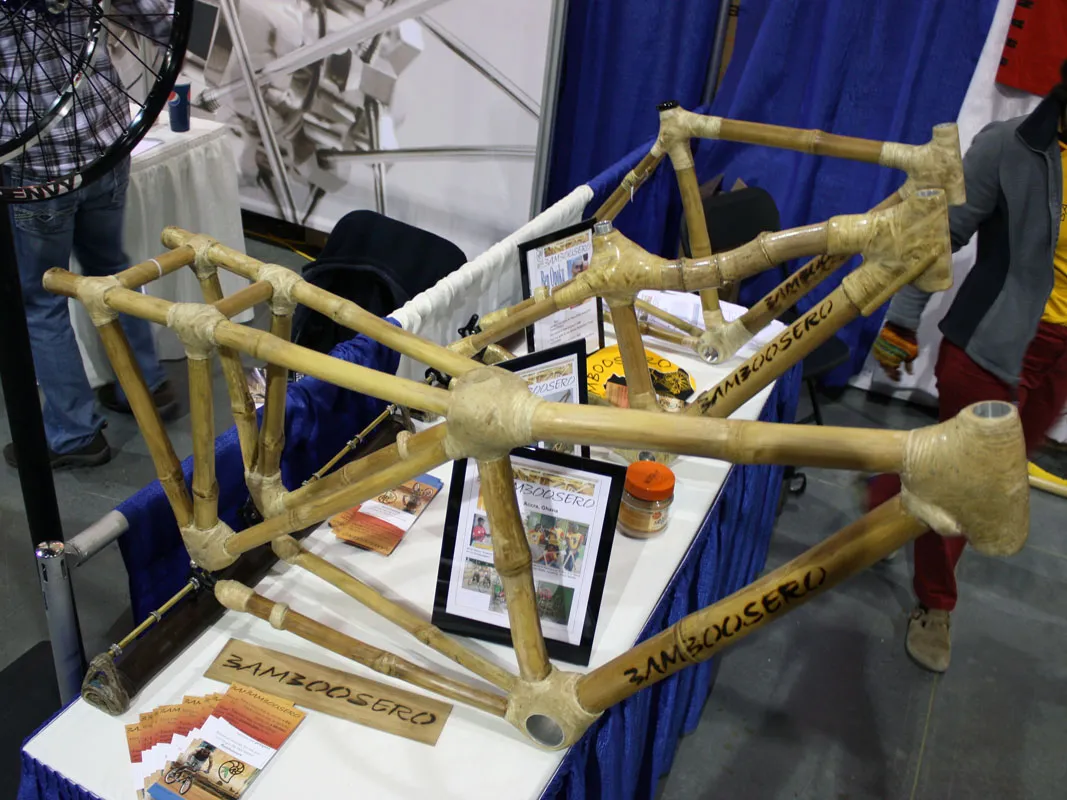
Boo Bicycles
Colorado-based Boo Bicycles also use bamboo tubing but mixed with more conventional hand-wrapped carbon fibre joints and with a decidedly high-performance intent. One of the highlights of their booth was a slick-looking singlespeed cyclo-cross bike with an integrated seatmast.

It also featured clever rear brake routing that runs inside the top tube then exits straight out the back of the seat cluster for a perfectly direct cable path. A split driveside rear dropout allowed the use of a Gate carbon belt drive for a light, comfortable – and quiet – machine.

Sylvan Cycles
Hardwood builders Renova were a curious no-show but Sylvan Cycles filled the void with their engineered, eight-sided laminate frame tubes and custom stainless steel lugs. According to Sylvan, their hollow tubes have tested as stiff as steel but are 20-30 percent lighter and have a distinctly smooth ride quality as well.

In addition to providing virtually any geometry, Sylvan's custom lugs offer a unique look, too. The mitred joints are first tack TIG-welded for stability and then brazing materials are applied to the inside of the tubes instead of the outside, leaving an impossibly small brass exterior fillet that's barely visible.

Check out the thumbnail gallery at the top of this page for more photos, including shots of composite models from Seven, Independent Fabrication, DeRosa, Cyfac, Ruegamer and Strong.



